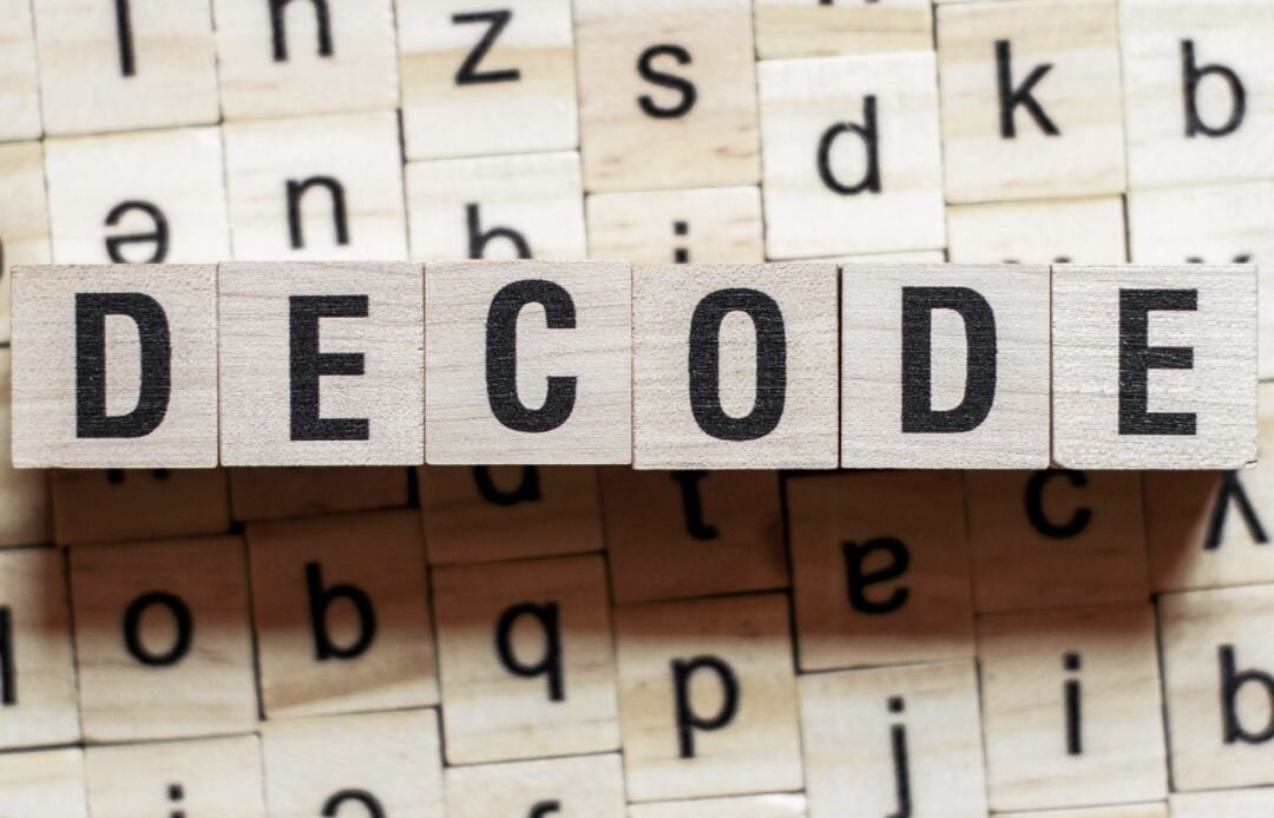
Decoding is at the heart of reading. While far from the only necessary skill, it is the skill without which all other reading skills are virtually useless. Decoding simply refers to the process of determining how to say a word based on its sounds. This used to be widely referred to as “sounding it out.” This phrase has gone somewhat out of fashion, simply because it’s a bit misleading. Not every letter in a word makes an individual sound, nor does it make the same sound in every single word. Think of the ‘g’ sound in the words ‘giraffe, ‘big, haughty, cough, through, etc. “Sounding it out” implies that each letter has one sound it should always make and that just isn’t the case. Therefore, many educators have replaced the phrase with “let’s decode it.”
Cracking the “Code”
Reading itself is a construct. Humans are not born innately knowing how to read, and it’s not an automatic outgrowth of learning to speak, either. And while reading has become a crucial skill, especially in the 21st century, it isn’t necessarily “natural” to us. In order for students to become skilled readers, teachers must very deliberately teach them how to read. They must practice reading over and over again until it feels natural. This practice comes more easily once students have mastered the alphabet and its many sounds.
The alphabet was created to represent language. It is quite literally a code, so when we teach students how to read, we are teaching them to decipher a code, hence the term ‘decoding.’
The Difference Between Decoding and Phonics
Oftentimes, the terms ‘decoding’ and ‘phonics’ are used to refer to the same thing. While they are both related to reading, they are different concepts. Decoding is using one’s knowledge of letter-sound-symbol relationships to determine a word’s pronunciation. Phonics is an instructional approach to teaching decoding. It is one of the most effective methods of teaching students how to decode, but it isn’t the only one.
Decades ago, it was thought that phonics was actually not the best instructional path for most reading students. It was reserved only for those who needed intervention, or who weren’t able to just “pick up” the reading skills they needed. Research has proven that phonics is what works best for all students, when combined with explicit instruction in all other reading concepts (vocabulary, comprehension, etc.)
When a Word Can’t Be Decoded
While there are letter patterns in words that students need to remember in order to correctly decode most words, there are also entire words that can’t be decoded. Although the ‘g’ in ‘rug’ and ‘giant’ make different sounds, they are still decodable. Students need to learn and remember the rules associated with the sounds ‘g’ can make if different combinations. But for words that don’t follow typical phonics patterns, students must learn to read these words by sight, hence the name “sight words.” These include words like “said,” “come,” and “have.” Sightwords.com has some excellent lists of words students should have under their belts by the end of each grade level.




